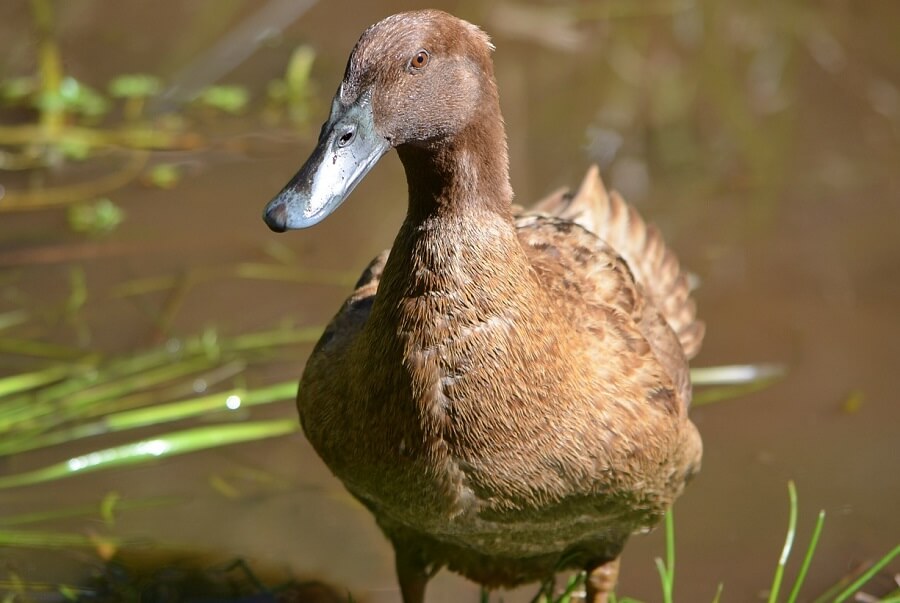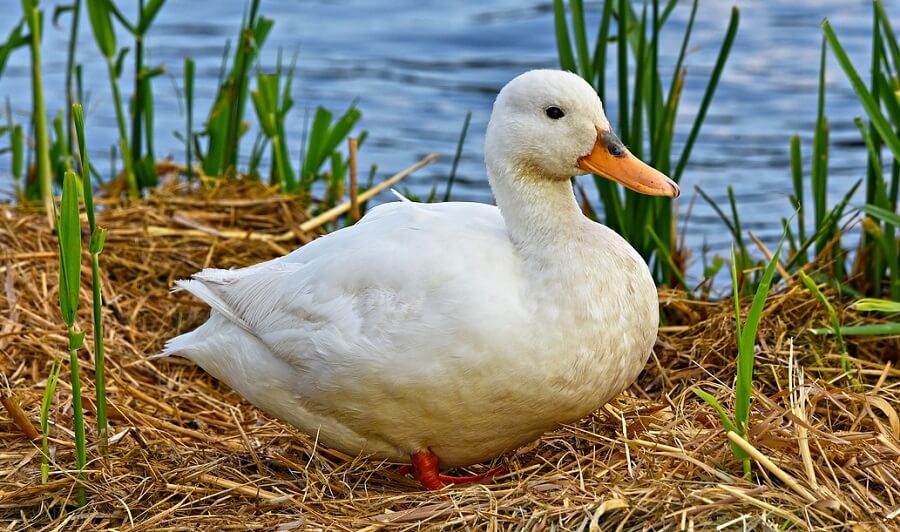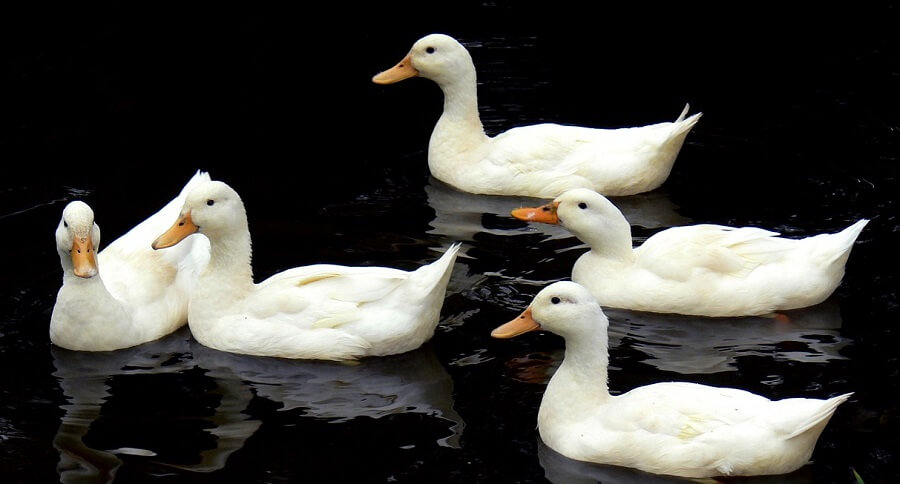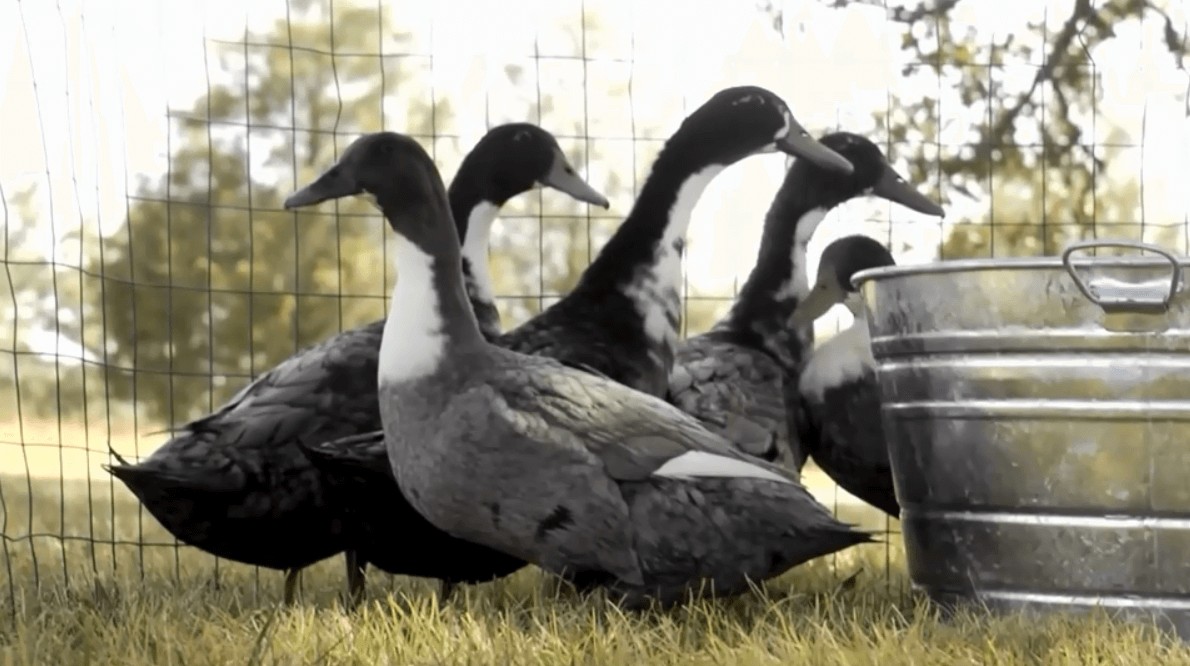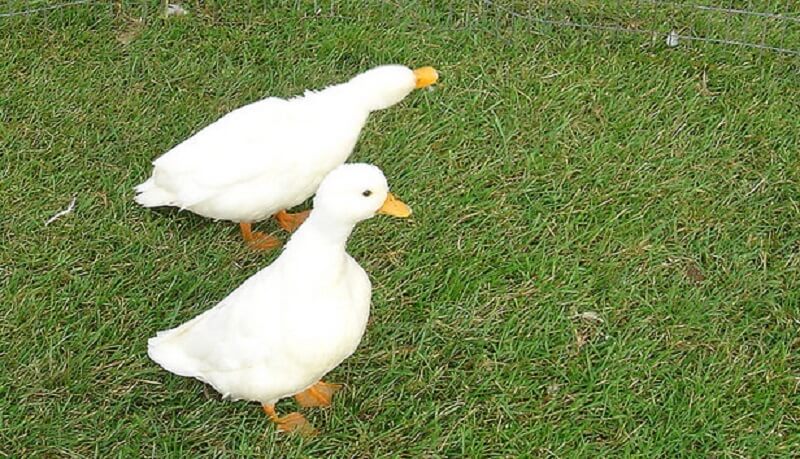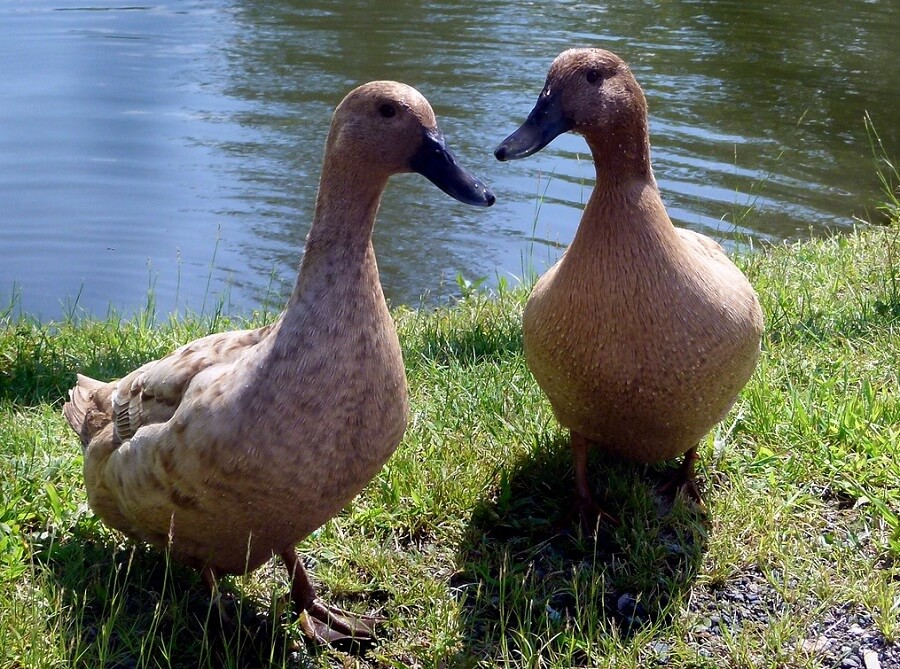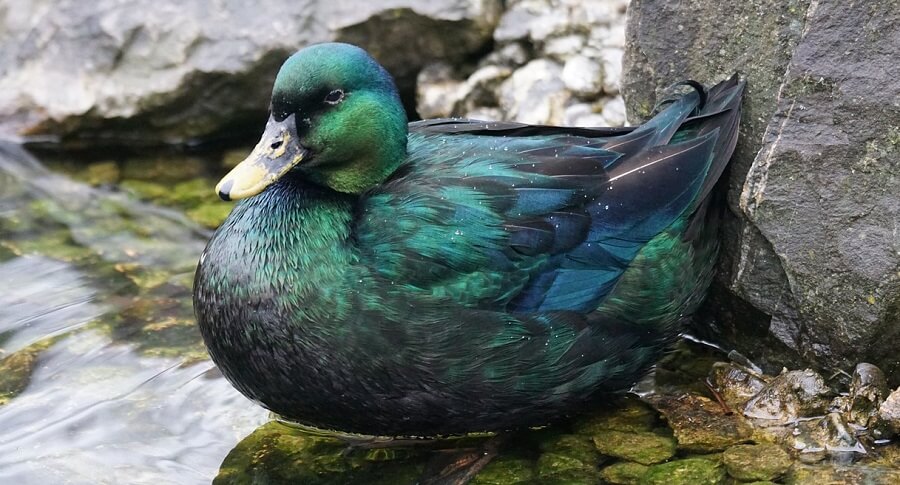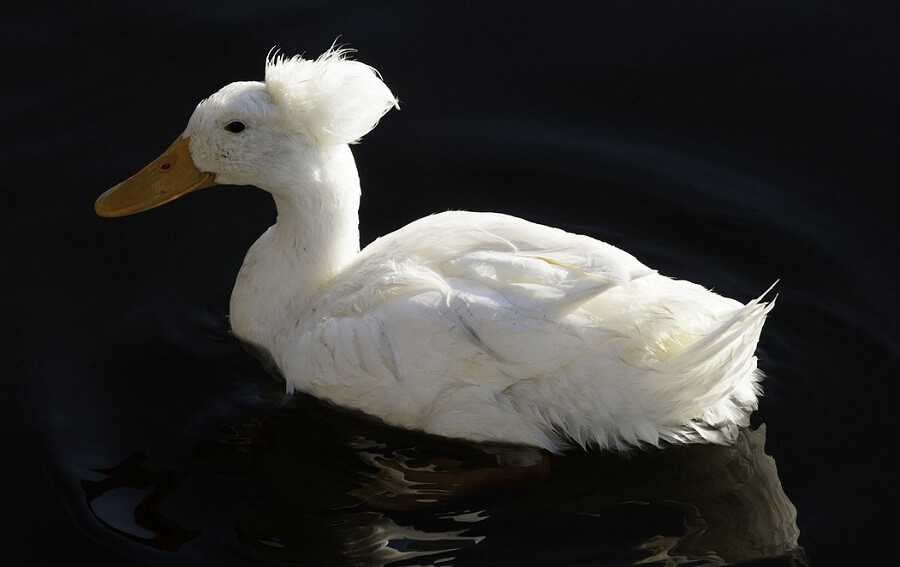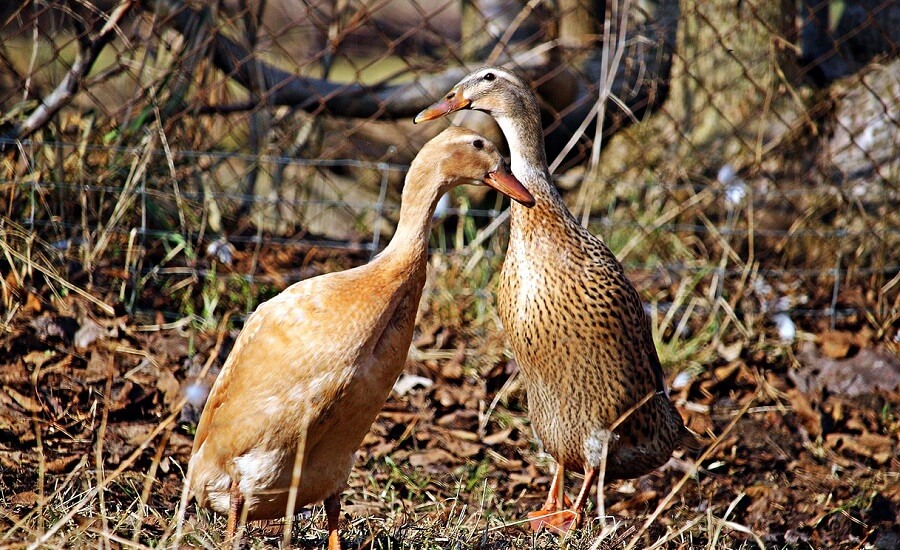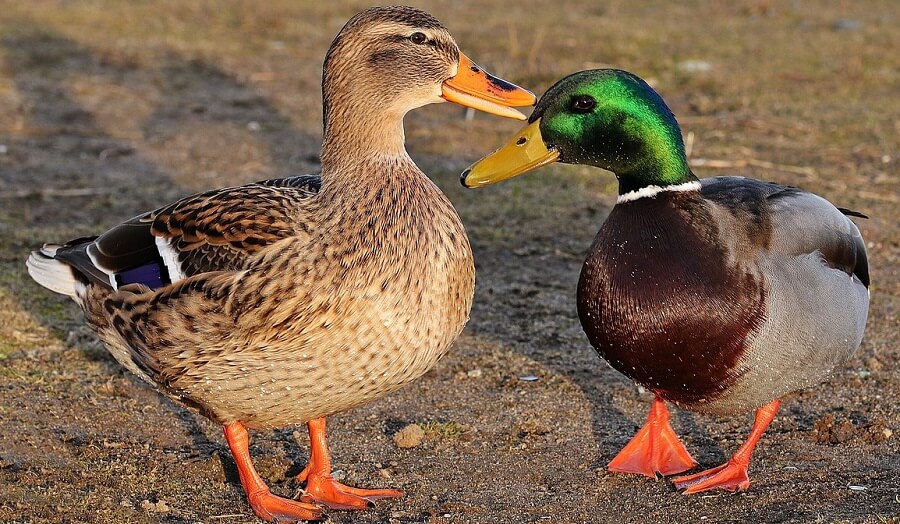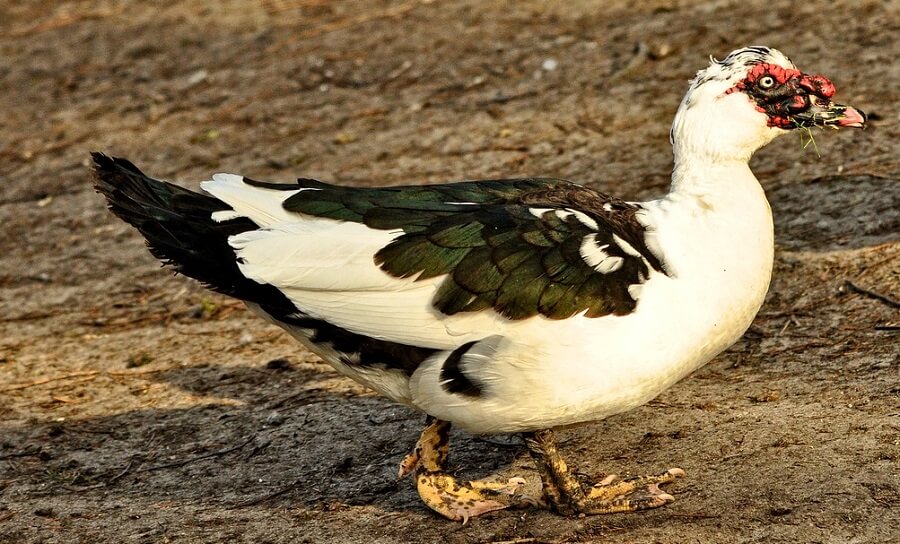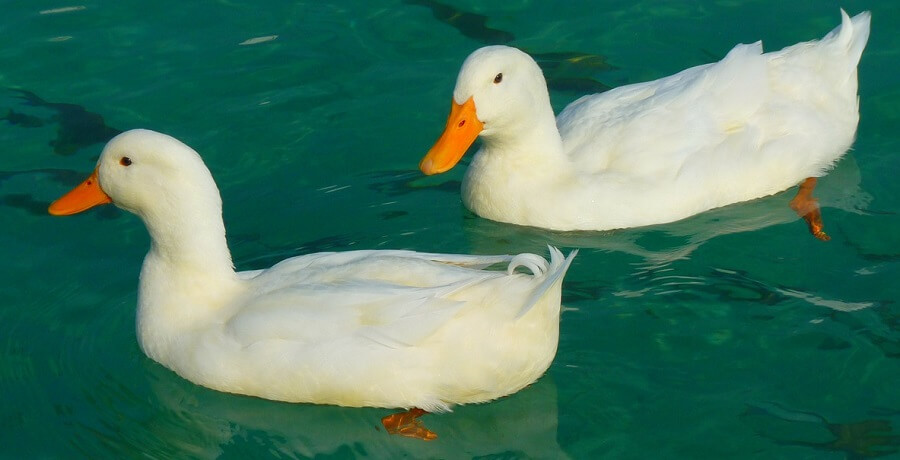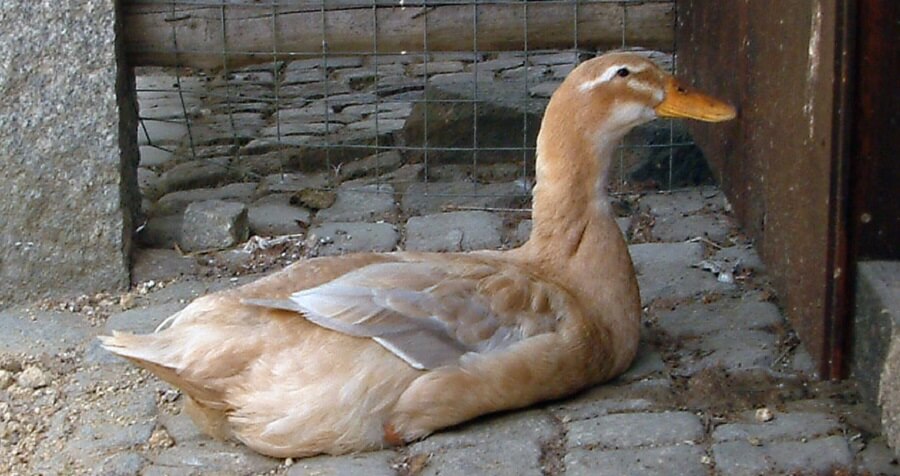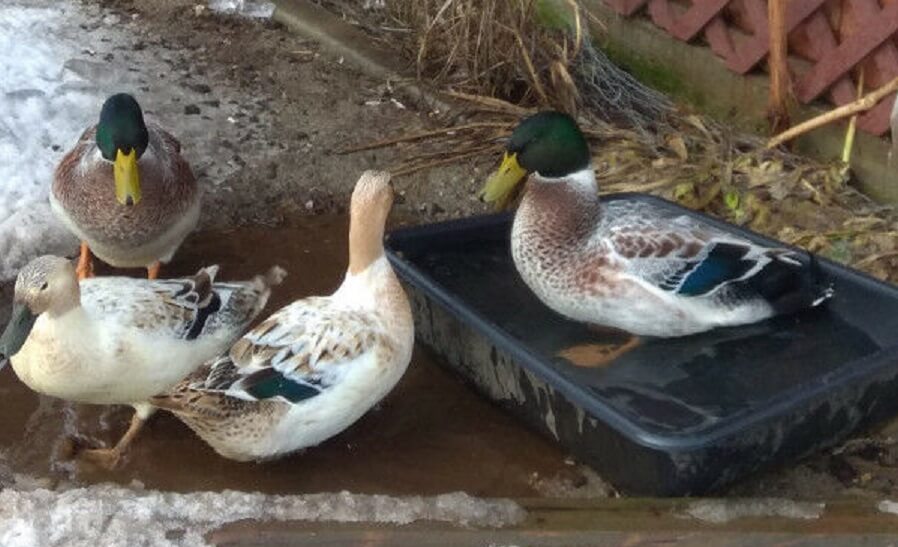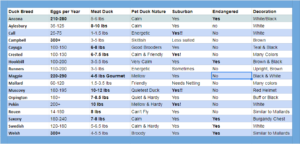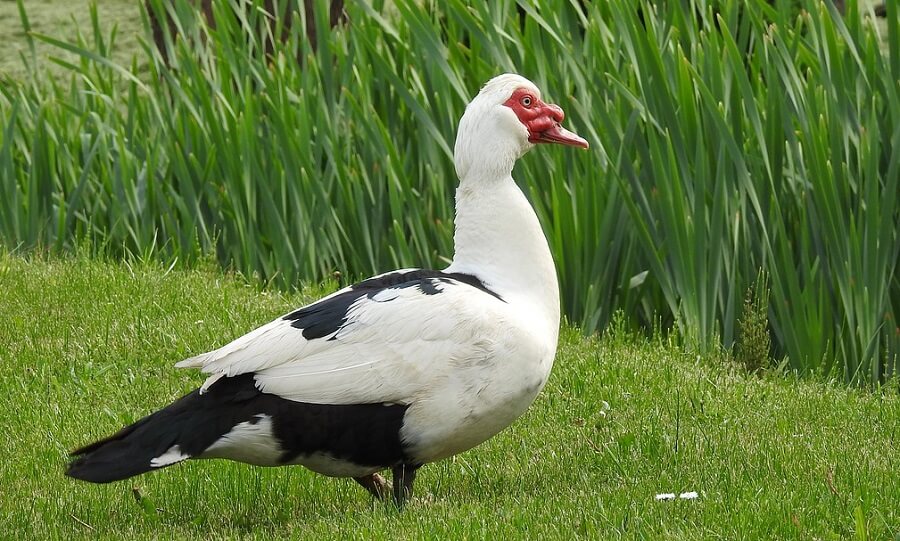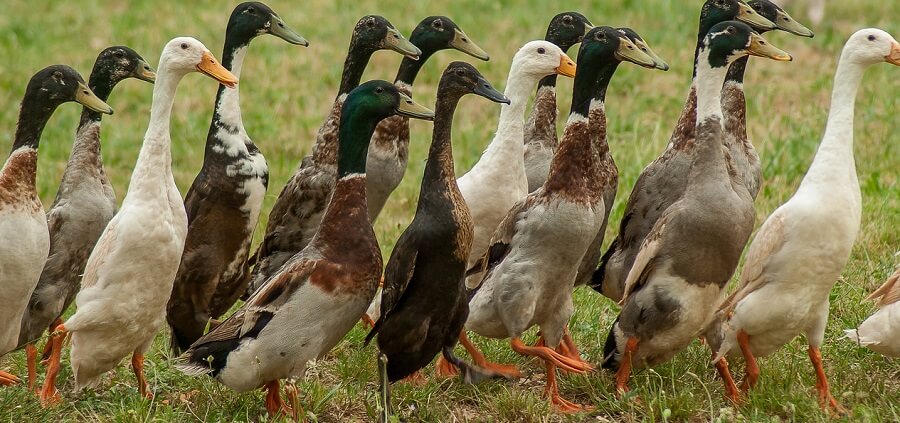What Kind Of Ducks Should I Get?
Ducks come in all sorts of varieties. If you want ducks but don’t know what you want to raise them for, then most varieties of ducks will provide plenty of fun and education. However, here’s a guide to choosing the best ducks for your backyard!
You will want to decide why you want ducks. Do you hope to get a lot of rich eggs from them, are you planning to butcher them for meat, or do you want a mellow pet for your kids? Maybe you want to help in the conservation of an endangered species. Each duck variety has its perks.
When choosing a duck species consider the following things:
- Egg Layer Ducks
- Meat Production Ducks
- Combination Ducks
- Conservation Ducks
- Pet and Backyard Ducks
Depending on the purpose for raising ducks, there are many choices of duck breeds to choose from. You can choose ducks that are great for meat and egg production. Or choose another variety that helps to conserve a rare duck breed while also offering high egg production. Other duck owners want a calm and friendly duck that will become a good meat duck. Others love mini ducks, like call ducks.
You may also want to consider the cost of having ducks.
What Breed Of Duck Is Best For Eggs?
If egg production is your main goal, there are several varieties of ducks that can produce more eggs than the average chicken. Further, ducks can continue to lay eggs even in the winter if they are given the right conditions such as longer light hours, plenty of feed, water, and calcium.
The 10 Very Best Ducks For Eggs Are:
- Campbell Ducks: 300+ eggs a year, weight 3-5 pounds
- Welsh Harlequin Ducks: 300+ eggs a year
- Magpie Ducks: 220-290 eggs a year
- Pekin Ducks: 200 eggs a year, weight 10 pounds
- Ancona Ducks: 210-280 eggs a year, weight 5-6 pounds
- Saxony Ducks: 190-240 eggs a year, weight 7-8 pounds
- Indian Runner Ducks: 150-200 eggs a year, weight 3-5 pounds
- Muscovy Duck: 180-195 eggs a year, weight 10-12 pounds
- Rouen Ducks: 140-180 eggs a year, weight 6-9 pounds
- Hookbill Duck: 100-200 eggs a year, weight 3-5.5 lbs
What Kind Of Duck Produces the Tastiest Meat?
Two main qualifications for duck meat are usually wanted. Most of the time good meat ducks are considered ideal for meat because they are larger ducks. However, there are a few preferred meat ducks that are preferred because of their special gourmet flavor.
The 10 Best Ducks To Raise For Meat:
- Pekin Ducks: 10 pounds. Lays 200 eggs a year
- Aylesbury Ducks: 8-10 pounds. Lays 35-125 eggs a year
- Muscovy Ducks: 10-12 pounds. Lays 195 eggs a year
- Orpington Ducks: 7.5-8 pounds. Lays 180 eggs a year
- Saxony Ducks: 7-8 pounds. Lays 190-240 eggs a year
- Aylesbury Duck: 7-8 pounds. Lays 35-125 eggs a year
- Rouen Ducks: 6-8 pounds. Lays 140-180 eggs a year
- Cayuga Duck: 6-8 pounds. Lays 100-150 eggs a year
- Crested Duck: 6-7.5 pounds. Lays 100-130 eggs a year
- Magpie Duck: 4-5 pounds. Considered gourmet meat. Lays 220-290 eggs a year
What Is The Best Multi-Purpose Duck?
If you want a good multi-purpose duck, you usually want a duck that is large enough to be a good meat duck that still produces a decent number of eggs. There are several varieties of ducks that work as a great egg and meat duck.
The Best All-Purpose Ducks:
- Pekin Duck: 200+ eggs a year with a weight of 10 pounds
- Saxony Ducks: lay 190-240 eggs and weigh 7-8 pounds
- Muscovy Ducks: Lay 195 eggs a year and weigh 10-12 pounds
- Rouen Ducks: 140-180 eggs with a weight of 6-9 pounds
- Cayuga Duck: 100-150 eggs a year with a weight of 6-8 pounds
- Crested Ducks: 100-130 eggs a year and weigh 6-7.5 pounds
- Magpie Duck: 220-290 eggs a year and weigh 4-5 pounds
What Breed Of Duck Makes The Best Pet?
If you are looking for a pet duck you probably want a duck that will be good with kids. You may be looking for varieties of ducks that are ideal for backyards. Ducks are usually mellow, but some varieties are more calm, mellow, and bond more easily with their owners. The following ducks make good backyard pets because they are either quieter, smaller, or calm and mellow.
Best 10 Backyard Pet Ducks:
- Muscovy Ducks are the quietest ducks. This makes them ideal for urban areas where noise may be a factor.
- Ancona Ducks: Often called the friendliest duck breed.
- Welsh Harlequin Ducks: Very calm personality and small size make holding easy for children.
- Pekin Ducks: Calm and mellow with a larger size, which makes them more durable for holding by children.
- Hookbill Ducks: Calm and small ducks.
- Cayuga Ducks: Friendly ducks that lay grey eggs
- Call Ducks: Well suited for small areas, but they can be loud when separated from other ducks or excited.
- Aylesbury Ducks: Good natured and calm
- Crested Ducks: Friendly and calm
- Swedish Ducks: Hardy and mellow
What Is The Best Decoration Duck?
Ducks are beautiful creatures. Some varieties of ducks provide unusual coloring, shape or ornamental foliage. Many ornamental ducks are ideal for showing and exhibitions.
Best Ornamental Ducks
- Cayuga Ducks: Dark greenish black coloring is very striking
- Ancona Ducks: crisp coloring that is black & white, lavender & white, silver & white, blue & white, or chocolate & white
- Crested Ducks: Completely black or white with a crest on their heads
- Aylesbury Ducks: Prized for completely white appearance
- Mallard Ducks: beautiful coloring. Males have green iridescent heads and blue tips on the wings.
- Orpington Ducks: Deep yellow coloring with a lot of feathers
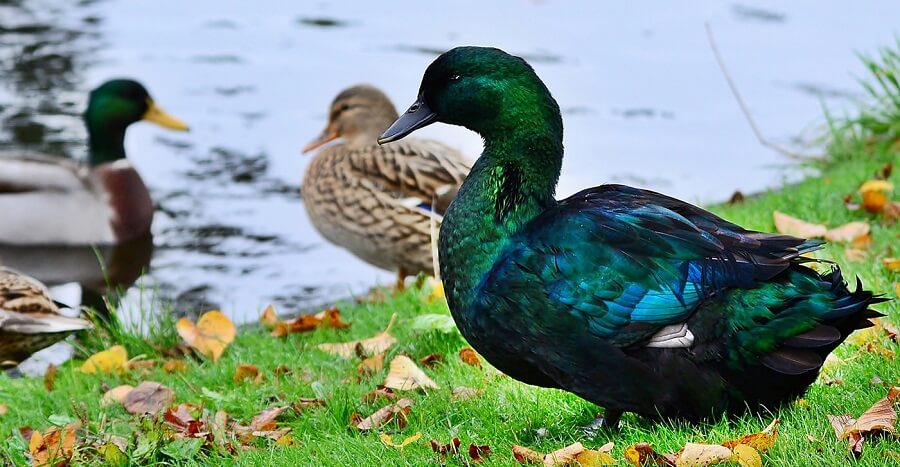
What Are The Best Conservation Ducks To Raise?
There are many varieties of ducks that are listed as endangered or critically endangered. These ducks can be raised in backyards and on farms. This helps the duck breed to recover from its critical status.
Best Ducks To Raise For Conservation
- Ancona Ducks: egg layer
- Saxony Ducks: all-purpose duck
- Swedish Ducks: best free-range duck
-
Welsh Harlequin Ducks: great meat and egg duck
-
Hookbill Ducks: average-sized meat and egg production
Ancona Ducks Are Good Egg Layers
Ancona ducks are not considered a separate breed in the USA but are a great egg layer. They lay about 210-280. Anconas are black and white, blue and white, chocolate and white, and even lavender and white or silver and white.
They were developed in the United Kingdom in the 1900s. They grow to about 5-6.5 pounds. They have calm dispositions.
- 5-6 pounds
- 210-280 eggs per year
- Critically endangered
- Not considered a separate species in the United States
Aylesbury Ducks Are Prized for Meat
The Aylesbury duck originated in England in the 1800s and 1900s. They are prized for their completely white appearance. They make a good meat bird because they reach 8-10 pounds. They can reach 7 pounds in 8 weeks.
They usually lay about 35-125 eggs a year. They are good mothers. Aylesbury ducks are calm and good-natured. They walk slower and are less active, which makes them a good pet.
- 8-10 pounds
- 35-125 eggs a year
- Poor flying ability
- Good mannered and less active
- Popular for meat
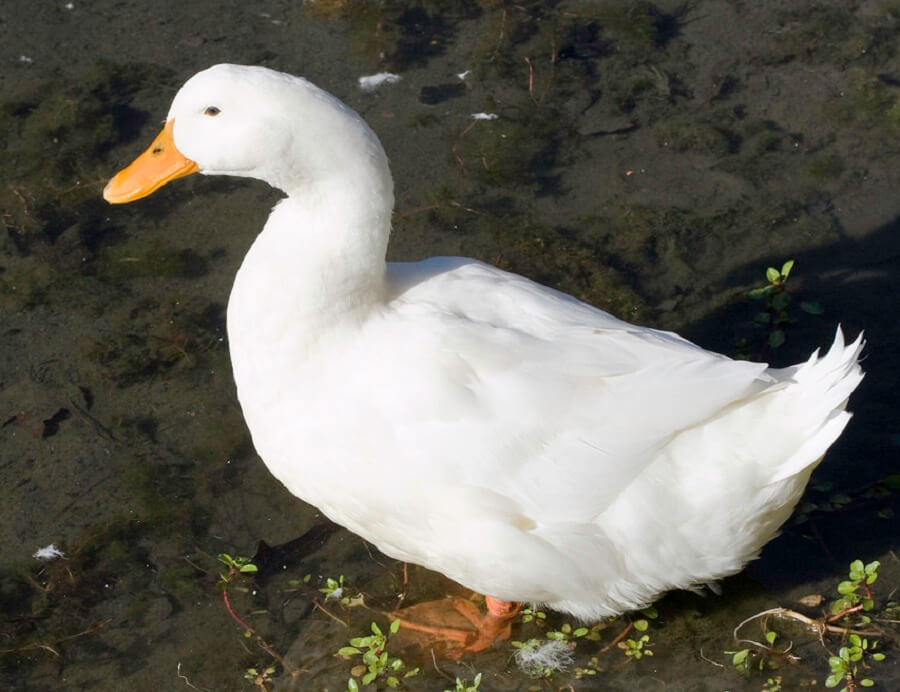
Call Ducks: Small And Ideal For Suburban Yards
The call duck is one of the smallest ducks. It is believed to have been introduced from the Far East. It is not bred to be a fatter duck and so it doesn’t need as much space as traditional ducks. Call ducks weigh just over a pound to 1.5 pounds.
Most call ducks will lay between 25-75 eggs a year. They lay primarily in the early spring and summer months. They cease laying in the fall. They do not brood well.
The call duck used to be on the verge of extinction, but has since made a comeback and is no longer considered rare. They are usually grey or white. They are also a good flyer and very energetic.
- 25-75 eggs a year
- Small size makes them better suited to smaller spaces than other ducks
- 1-1.5 pounds
- Good flyer
Campbell Ducks Are Ideal For Laying Eggs
Campbells are one of the best egg layers of the duck breeds. They regularly lay more than 300 eggs a year and will lay through the winter if conditions are right. They are smaller birds that weigh between 3 and 5 pounds when fully grown.
Campbells were bred in the early 1900s. They are also called Khaki Campbells because their creator added Khaki to their names in a patriotic nod to the British troops during the Boer War.
Campbells don’t brood well.
Here are a few more things about Campbells
- More skittish and scar more easily
- Gender is determined by the color of the feet. Female ducks have brown feet and drakes have orange legs.
- Limited flying abilities
- Not good for meat
- Khaki or light brown colored
- 300+ eggs a year
- 3-5 pounds
Cayuga Ducks Provide Prized Black Eggs
The Cayuga is the only duck that was developed in the United States. They are a dark greenish-black. The Cayuga is mainly raised for exhibition but is also used as a meat duck. It takes longer to fatten. They reach about 6 pounds in 8 weeks. They can reach 8 pounds in 12 weeks to grow out.
They lay about 100-150 eggs a year. At the beginning of the year, the eggs will be black but will lighten over the season to a white egg. They are good brooders.
- 100-150 eggs a year
- 6-8 pounds
- Slower growers
- Black eggs
- Beautiful dark foliage
Crested Duck: A Rare Combination
The crested duck is not considered an actual breed. It is a white or black duck with a crest on the top of its head. However, it cannot breed true because the gene that causes the crest is fatal when breeding. 25% of fertile eggs will never hatch. Only half the eggs will develop into crested ducks. The rest won’t pass the crested gene on.
The origin of the crested duck is not known, but they have been portrayed in paintings since the 1600s.
They weigh up to 6 and 7.5 pounds, depending on gender. They will lay between 100-130 eggs a year. They are also calm and friendly, which makes them good pets.
- Medium-sized bird at 6-7.5 pounds.
- 100-130 eggs a year
- Poor flying ability
- Calm and friendly manner
Hookbill Ducks: A Favorite of Charles Darwin
Hookbill ducks are quirky ducks. They are thought to have originated in Asia. They are small ducks, usually weighing about 3-5.5 pounds. Their coloring is usually dusky, white bib, and white. They are a rare duck.
Hookbill ducks are good layers and will usually lay 100-200 blue eggs. They make good mothers. They are calm and can be very tame.
- Very calm and tame birds
- 3-5.5 pounds
- 100-200 blue eggs
- Rare
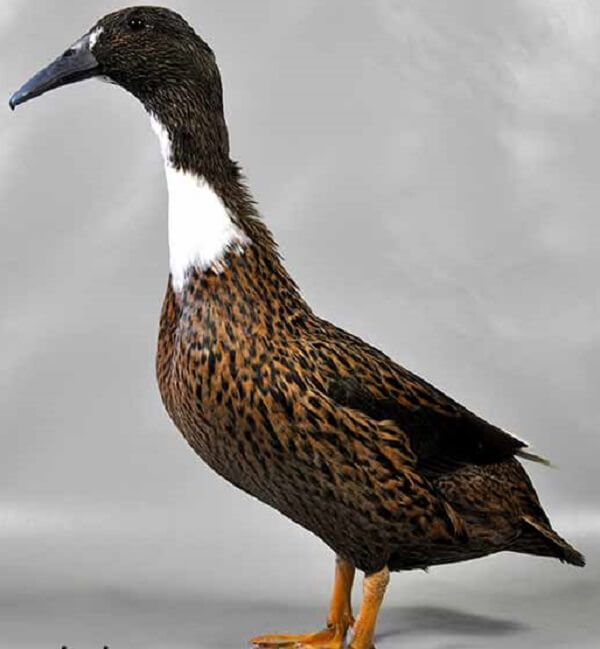
Indian Runner Ducks Are Decent Egg Layers
The Indian runner is a smaller duck that lays a decent amount of eggs. Indian Runners usually lay between 150-200 eggs a year. They grow to between 3-5 pounds. Indian runners show up with black, buff, fawn, grey, and chocolate coloring.
They are the most upright ducks. They are often nicknamed penguin ducks because they are tall and slender. Indian runners are energetic, active and run quickly. The love to forage for bugs and slugs.
They don’t swim well though.
- Upright ducks
- Run quickly
- Poor swimmers
- 150-200 eggs per year
Magpie Ducks Provide Gourmet Duck Meat
Magpies are typically black and white foliage. They were bred in the United Kingdom in the early 1900s. Magpies are a smaller duck and usually weigh between 4 and 5 pounds. Magpies walk upright.
They produce between 220 and 290 eggs a year. Although they are small, they are considered gourmet meat by chefs. They are capable of flying over a 3-foot fence, but not capable of sustained flight.
- 4-5 pounds
- 220-290 eggs a year
- Limited flying abilities
- Gourmet Meat

Mallard Ducks: The Original Duck
Mallard ducks are through to be the original ancestor to all but one duck variety. They are beautifully colored with blue tipped wings and green heads on the males. Their body is brown.
Mallards fly well and will need their wings trimmed or a fully covered run if you raise them. They also brood well and will raise young easily. Mallards lay about 60-120 eggs a year.
They love to swim and will do that all day if allowed. Mallards are small ducks and weigh between 1.5 and 3.5 pounds.
- 60-120 eggs
- Small ducks that swim and fly well
- Native to most places
- 1.5 – 3.5 pounds
Muscovy Ducks: Unique Birds Great For Eggs and Meat
It is debated whether or not Muscovy ducks are actually ducks or are another type of bird. Their body looks like a duck’s, but they have distinct differences from all other known ducks. They are the only duck that doesn’t’ descend from the mallard.
Muscovy ducks are heavy birds and can weigh as much as 10-12 pounds when fully grown. They also lay a lot of eggs and easily lay 180-195 eggs in a year. They make good mothers that will brood the young. The ducklings take longer to hatch than any other duck, 30-35 days. They come in a variety of colors including black, brown and white mix.
Muscovy ducks also don’t quack, they hiss. This makes them a quieter duck. They are also the only duck that will attack a predator when in danger, which makes them less vulnerable. They are the best foragers out of all the duck species.
- 10-12 pounds
- 180-195 eggs a year
- Hissing makes them quiet ducks
- More defensive against predators
Orpington Ducks: Black and Buff Both Suited For Colder Climates
The Buff Orpington is not a recognized breed. It was originally considered an egg breed and is a smaller bird. They lay about 180 eggs a year. They are one of the most easily trained ducks and is more trainable than the other colors of Orpingtons. They have golden yellow coloring and thick feathers. They usually grow to about 7-8.5 pounds.
The Black Orpington were bred black to hide the dirt. All Orpingtons are good mothers. They are also quieter.
- 180 eggs a year
- 7-8.5 pounds
- Good mothers
- Do well in colder climates

Pekin Ducks Are Ideal Meat Ducks And Great Layers
Pekin ducks are one of the largest ducks. They weigh in at 10 pounds when fully grown. They were originally bred as a meat duck in China around 2500 B.C.
Pekin ducks aren’t good at brooding so if you want to raise some, you’ll need an incubator. Otherwise, they lay large white eggs to the tune of about 200 eggs a year. Pekins are hardy and will eat twice as much as a chicken. They are also mellow and make good pets. They are pure white.
- Great meat birds at 10 lbs a bird
- Mellow, calm, and friendly
- Won’t brood eggs very good
- Lay about 200 eggs a year
- Good foragers
- Don’t fly
- Weigh about 7 pounds at 6 weeks
Rouen Ducks Are Good Multi-Purpose Ducks
Rouen ducks have a deep flavor. They look like a large mallard duck. Rouens were originally bred in France and are the traditional French meat duck. They have a lot of meat and quality fat. They lay about 140-180 bluish eggs a year. They will grow to between 7 and 8 pounds in about 13 weeks.
- Grow to 6-8 pounds
- 140-180 eggs a year
- The meat duck of the French
- 5.5 pounds at 4 months
- Too heavy to fly

Saxony Ducks Make A Great All-Purpose Duck
Saxony ducks are larger ducks that also lay a decent number of eggs. They will usually lay about 190-240 eggs a year. They grow to about 7-8 pounds, which makes them a good meat duck.
They are a cream color with a burgundy chest. Males have silver-blue wings and charcoal grey heads with a white ring around their necks. Females are fawn colored with white eye stripes and orange bills.
Saxony ducks were bred in 1930 in Germany as an all-purpose duck. The females brood well. Saxony’s are considered critically endangered.
- 7-8 pounds when grown
- 190-240 eggs a year
- Critically endangered
Swedish Ducks Are The Best Free-Range Duck
Swedish ducks have coloring that makes them difficult for predators to see. Swedish ducks were bred in Northern Europe in the 1800s. Many varieties of Swedish ducks are considered critically endangered. They grow to between 5-6.5 pounds.
Swedish are broody ducks. They will lay about 120-180 eggs a year. Swedish are calm and hardy ducks.
They are black, blue or silver with white bibs.
- 120-180 eggs a year
- Medium sized ducks
- Critically endangered
- 5 – 6.5 pounds
Welsh Harlequin Ducks: Heavy Egg Layer
The welsh harlequin duck is listed as critically endangered. It was bred in 1949 in Wales. It is a lightweight duck that produces high amounts of eggs. It lays over 300 eggs in a year. The ducks are broody and raise ducklings good.
They weigh between 4.5-5 pounds. They are sometimes used for meat as well as egg production. Welsh harlequins have light brown feathers with scattered white coloring.
- 300+ eggs a year
- 4.5-5 pounds
- Broody
- Critically endangered
Chart of The Best Duck Breeds
In this chart, I’ve made the ducks that are best suited for various purposes. The best egg ducks have been higlighed, as well as the best meat ducks and the rarest ducks.
What Are The Benefits Of Duck Eggs?
Duck eggs are usually bigger than chicken eggs. Some duck eggs are as much as 30% larger than chicken eggs. Additionally, some breeds of ducks can lay more eggs each year than the average chicken.
Duck eggs are rich in Omega 3 and Iron. They are also richer in other nutrients. This can be seen by the brighter yolk. The pale yolks of chickens come from fewer nutrients in the yolk.
Duck eggs are higher in fat content and protein than chicken ducks. This makes duck eggs more ideal for backing because the goods rise better.
Lastly, duck eggs have a longer shelf life than chicken eggs. Studies have shown that duck eggs stay good up to 4 months in a refrigerated environment. Some duck eggs can stay good as long as 6 months!
How Many Eggs Do Ducks Lay In A Day?
Ducks can lay up to two eggs a day. It is more common for them to lay one egg a day, but with the right conditions, nutrients and adequate food, they will lay an occasional second egg. Duck hormones can cause two eggs a day and after laying a second egg, their hormones usually level out.
The second egg is usually soft-shelled. This is because ducks rarely have enough extra nutrients to lay a hard-shelled egg.
Related Questions:
How to Sex a Duck
Duck are generally sold straight run- or unsexed. You purchase a duck without knowing it’s gender. The gender is usually manifest after a few weeks of age, but can sometimes be determined early on.
Gender can be determined through several signs. Some varieties offer specific coloring for the ducks and drakes. But there are several signs that help to determine the gender of nearly any duck.
- Ducks honk and drakes hiss.
- Male ducks have a tail feather that curls up
Check out our duck guide earlier in this article to see if your variety of duck can be differentiated based on the coloring in addition to these common signs.
Why Are Ducks Good For The Garden?
Ducks are great for gardens. They will eat bugs and pests but won’t hurt the garden plants, unlike chickens. They can eat the bugs off the plants without actually harming the plants. However, they can tromp small seedlings so make sure your plants are established.
Why Are My Ducks Fighting?
Ducks are usually not violent. They are very social creatures that want to get along. They often look like a coordinated game of copy-cat. If your ducks look like they are fighting, they are probably mating.
Mating ducks may look violent. The male often pushes down on the neck of the female. Unless she honks, then she’s doing just fine. One male duck can handle many female ducks. You need multiple females per male or the male duck can mate a female to death. Have at least 3 or 4 females for every male. I have even heard that a male duck can handle mating with up to 12 female ducks.
Roosters can mate with ducks, but drakes should not mate with hens. They can harm the hens because their parts are different than roosters. This can cause damage to the hen’s reproductive systems and even cause death.
Can I raise ducklings and chicks together?
Ducklings and chicks should not be brooded together. There are several reasons for this. First ducks love water and will bring water into their bedding, food and all over. This will cause chicks to chill because chicks don’t have the same resistance to cold or water.
Secondly, ducks grow much faster than chicks. This means that within even a week or two, the ducks are more likely to trample the chickens and cause them harm.
Do You Need Water To Raise Ducks?
Ducks absolutely need water and a lot of it. They need water to eat, to keep their bills, nostrils, and eyes wet. They need water to clean their mucous membranes and to help with pest control. Ducks will get very unhealthy without adequate water. Plus ducks will drink substantially more water than other birds.
My Preferred Duck Supplies and Equipment
This list contains affiliate products. Affiliate products do not cost more but helps to support BestFarmAnimals and our goal to provide farm animal owners with accurate and helpful information.
Ducks can eat non-medicated chicken food or a specially formulated feed for ducks like this duck starter feed.
Mealworms as a protein treat, are easy to keep on hand. I try always to have some available.
An automatic feeder and waterer keep the mess down. I like this one because ducks can submerge their beaks, which is necessary for healthy eating.
DE or Diatomaceous Earth helps to keep bugs and pests down. I prefer food grade so it doesn’t hurt my ducks.
Niacin Tablets and Brewers Yeast are both very helpful in keeping ducks healthy.


